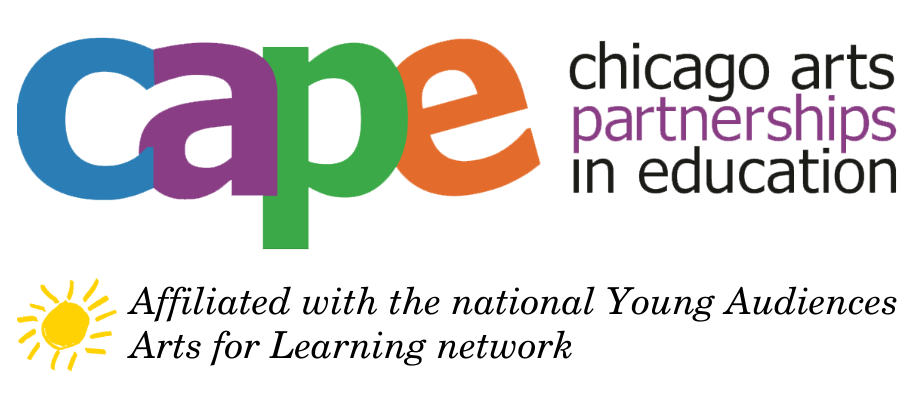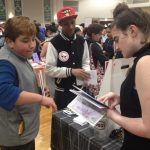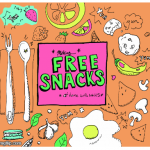Narrative Structure and Computer Coding
During the 2018-2019 school year we worked with students at Camras Elementary in Belmont Cragin to explore storytelling, animation, and computer coding. Below is a description of their project, as it was documented in their classroom portfolio and in our annual Convergence exhibition.
- Project Title: Narrative Structure and Computer Coding
- School: Camras Elementary
- Teacher: Marilyn Baez
- Artist: Niema Qureshi
- Grade: 7
The Big Idea: Animating Stories
Inquiry Question: How can students become agents for change through storytelling and digital animation?
Project Narrative:
Marilyn and Niema have worked together for four years. Having completed a similar project the prior year, they were ready to dig deeper by looking at the unit through the lens of systems. They initially worked with the students to brainstorm community issues they cared about and then broke down the issues into the smaller elements that made up the whole. By looking at each community issue/problem like this, students were able to consider their chosen issues in complex and nuanced ways.

Next, the students drew storyboards, which they then shared with their classmates to give and receive peer feedback. This stage of the project allowed the students to use the narrative arc to develop their stories and characters.
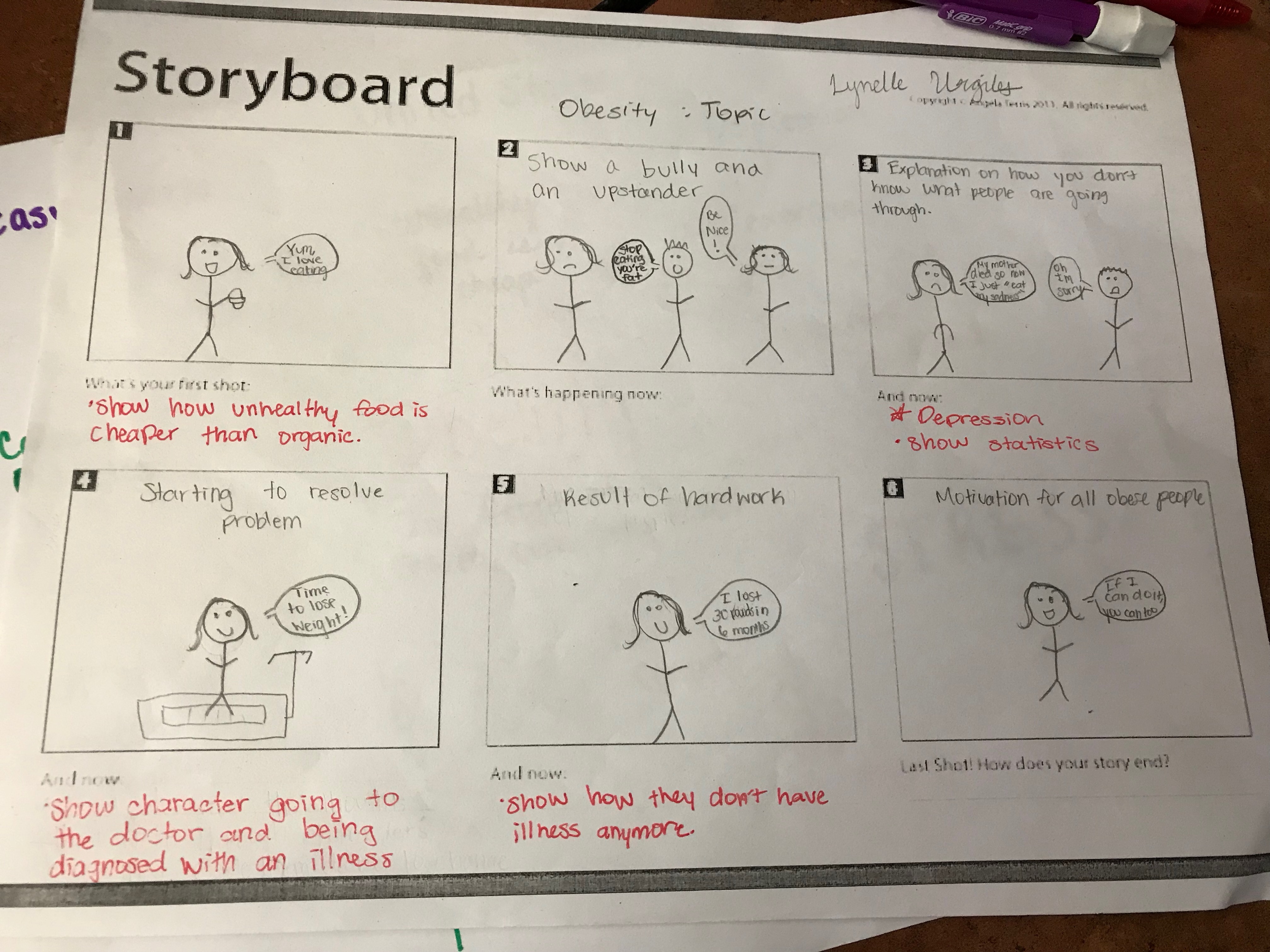
The students then created digital animations using the programming language SCRATCH. The narrative structure used in Language Arts was integrated with the language of block coding to help students animate personal stories related to topics such as gun violence, mental health and bullying.
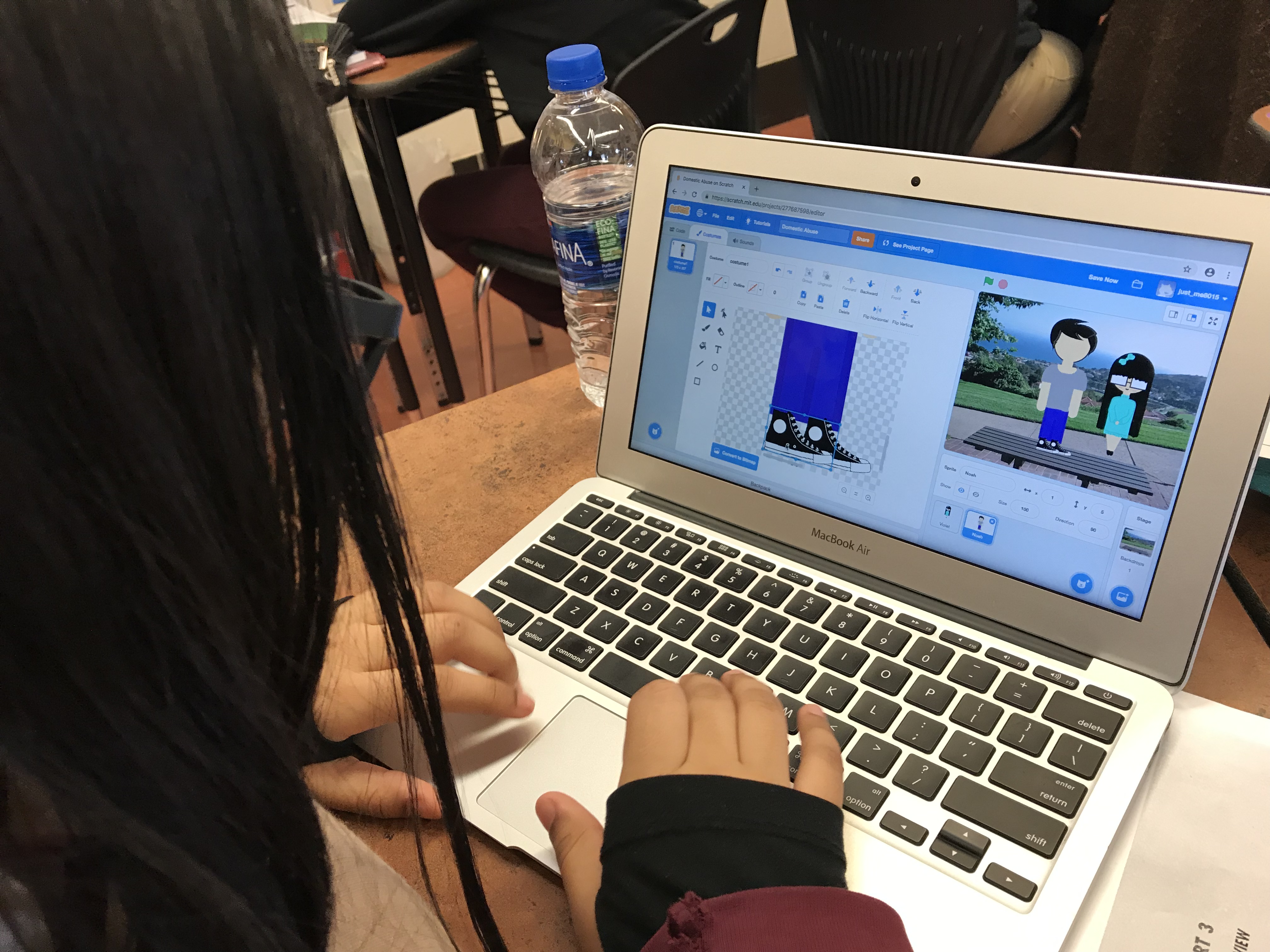
Finally, the students created artists’ statements to help crystalize and represent their thoughts on the social issues their artwork was tackling. These statements and the final animations were part of CAPE’s 2019 Convergence exhibition.
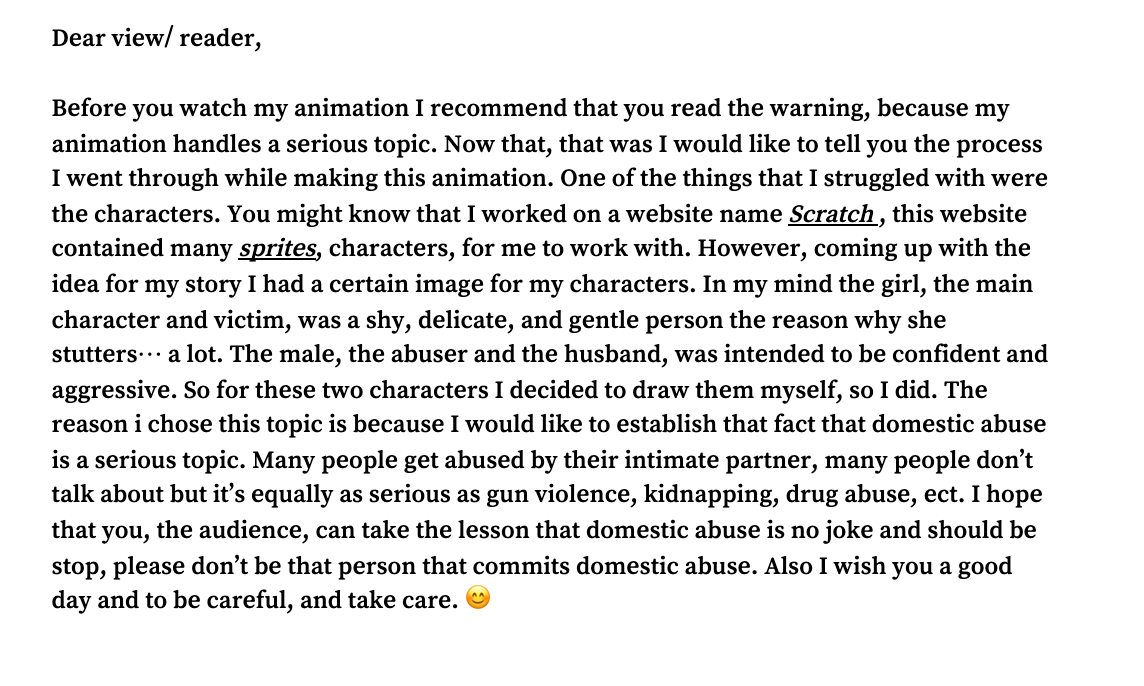 Project Outcomes:
Project Outcomes:
Students’ perspectives about their animation skills grew considerably. Students stated that they felt proficient in their ability select characters and settings to fit their storylines, and some even declared their creative skills, such as developing original animated artwork central to their stories, as exceptional. Students learned the components of a narrative story through the use of the narrative arch and demonstrated mastery in developing well-structured event sequences.
Additionally, the students’ artist statements revealed how they used different strategies to solve challenges they faced. For example, one student described how she created her own sprite (the pre-designed digital characters in SCRATCH) because the sprites available didn’t fit with the character she had in mind.
One student’s final animation about violence and drug abuse can be viewed here: https://scratch.mit.edu/projects/267810769/



